Abstract
A prospective 19-month study of 26 human immunodeficiency virus type 1-infected patients with episodes of erythematous or pseudomembranous oral candidiasis was done to evaluate the significance of Candida albicans biotypes in patients treated with antifungal therapy. Changes in the biotype of C. albicans were frequently noted in recurrent oral candidiasis. However, no correlation was found between the various biotypes and the clinical features of oral candidiasis, the clinical stage of human immunodeficiency virus type 1 infection, or the number of CD4+ lymphocytes. On the contrary, a significant correlation appeared among clinical lesion features, CD4+ cell numbers, and time of clinical disappearance of the oral lesions. Changes in the biotype of C. albicans were observed at the end of the antifungal therapy in 17 of 26 patients who had a second appearance of oral candidiasis as well as in 10 of 14 subjects who experienced a third reappearance of oral candidiasis.
Full text
PDF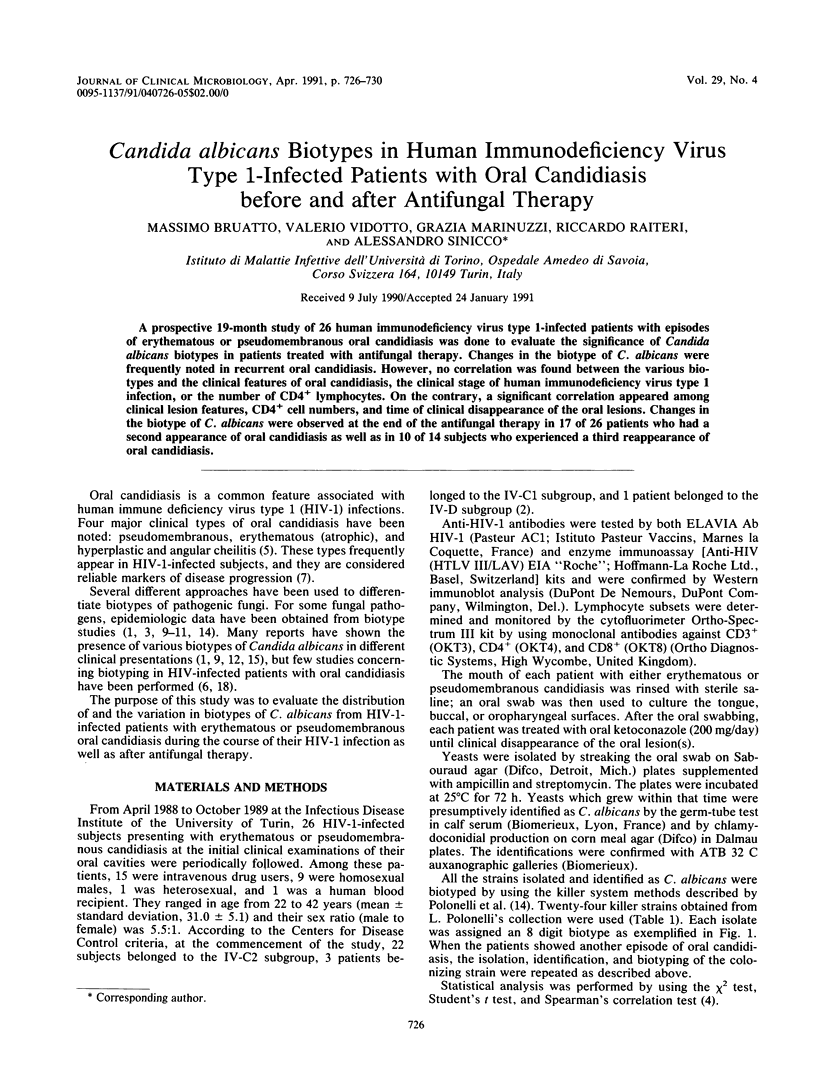
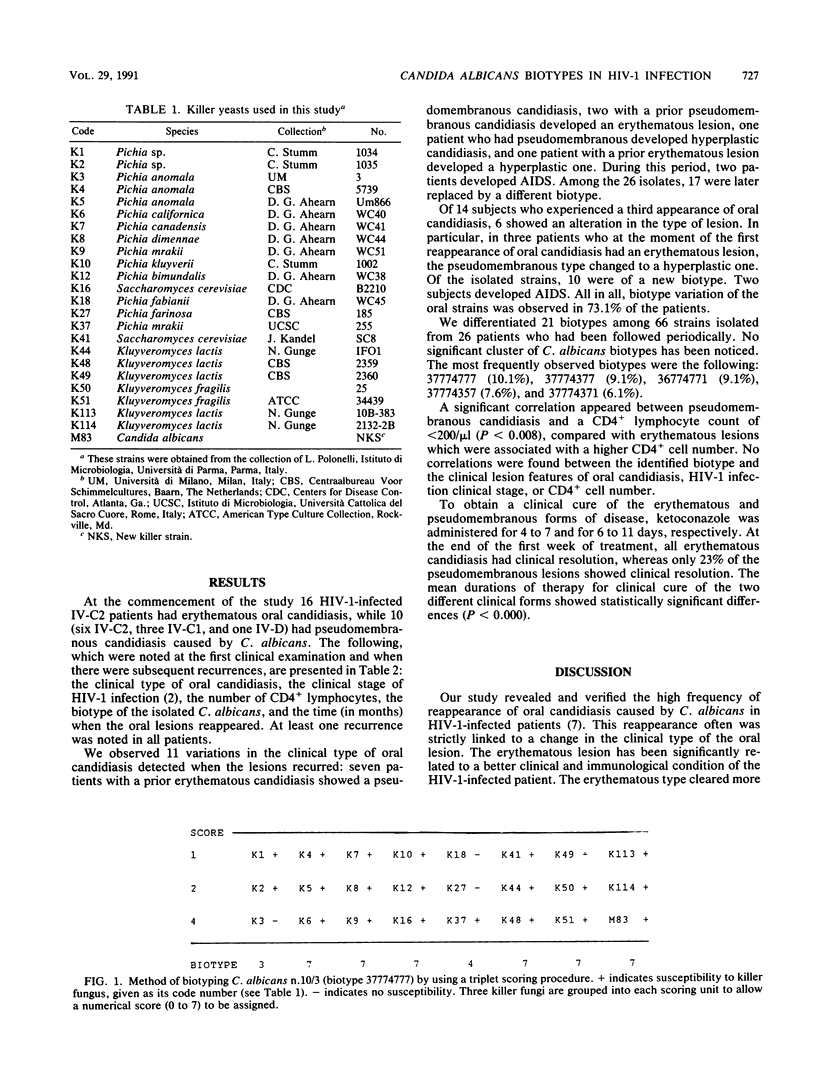
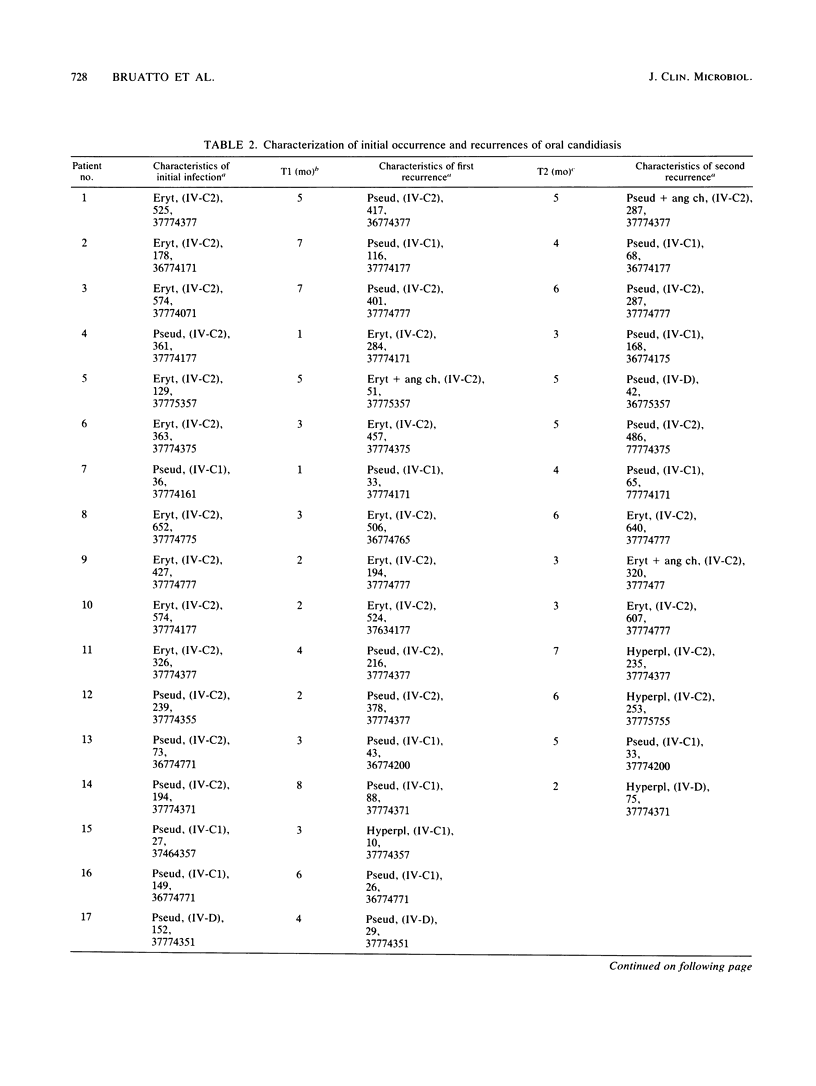
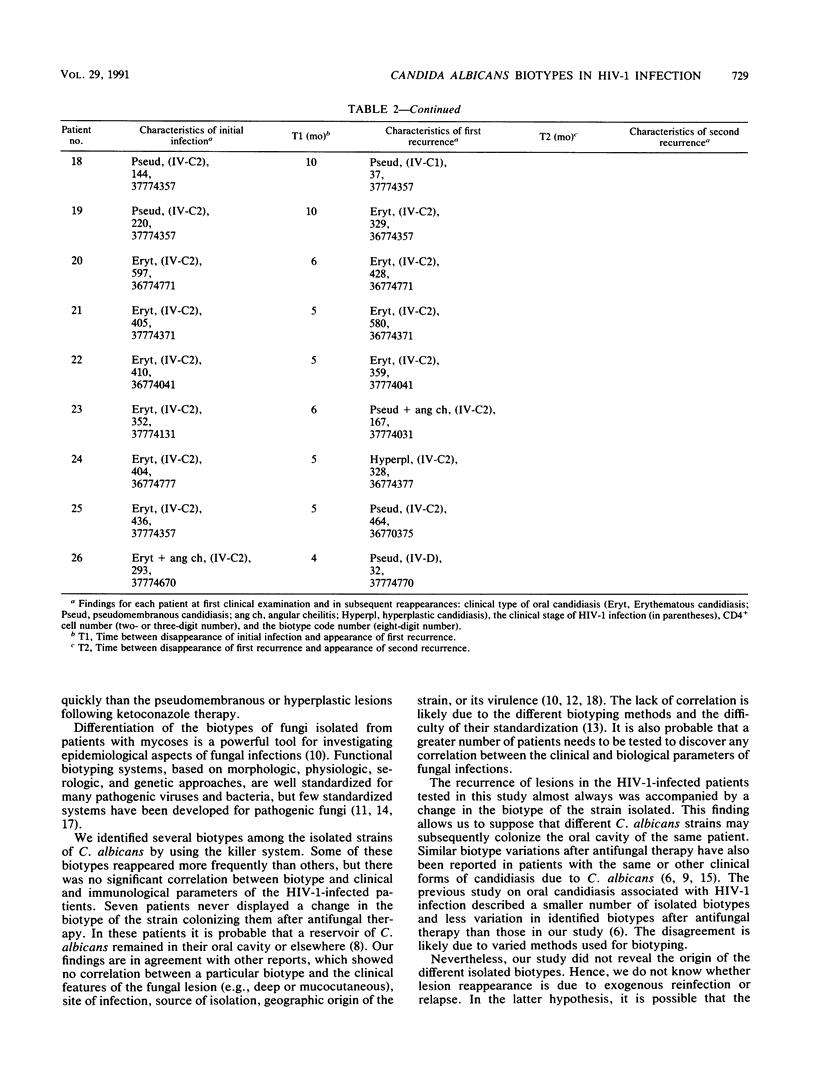
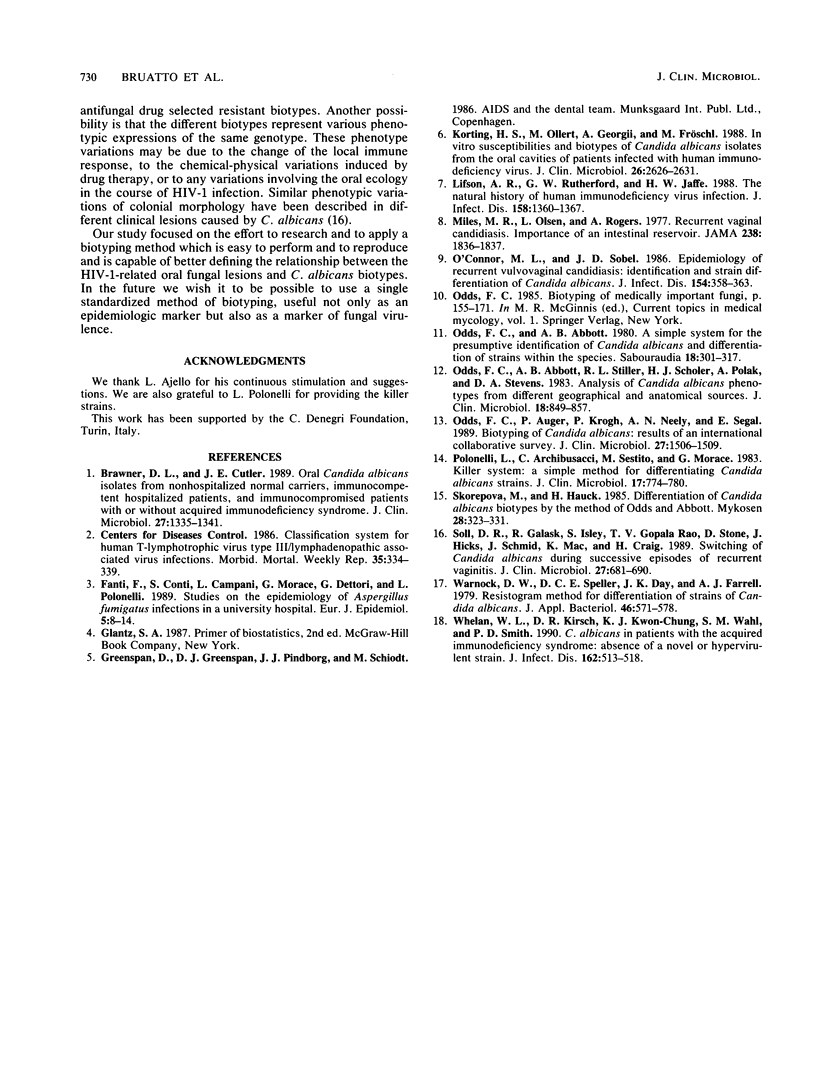
Selected References
These references are in PubMed. This may not be the complete list of references from this article.
- Brawner D. L., Cutler J. E. Oral Candida albicans isolates from nonhospitalized normal carriers, immunocompetent hospitalized patients, and immunocompromised patients with or without acquired immunodeficiency syndrome. J Clin Microbiol. 1989 Jun;27(6):1335–1341. doi: 10.1128/jcm.27.6.1335-1341.1989. [DOI] [PMC free article] [PubMed] [Google Scholar]
- Fanti F., Conti S., Campani L., Morace G., Dettori G., Polonelli L. Studies on the epidemiology of Aspergillus fumigatus infections in a university hospital. Eur J Epidemiol. 1989 Mar;5(1):8–14. doi: 10.1007/BF00145038. [DOI] [PubMed] [Google Scholar]
- Korting H. C., Ollert M., Georgii A., Fröschl M. In vitro susceptibilities and biotypes of Candida albicans isolates from the oral cavities of patients infected with human immunodeficiency virus. J Clin Microbiol. 1988 Dec;26(12):2626–2631. doi: 10.1128/jcm.26.12.2626-2631.1988. [DOI] [PMC free article] [PubMed] [Google Scholar]
- Lifson A. R., Rutherford G. W., Jaffe H. W. The natural history of human immunodeficiency virus infection. J Infect Dis. 1988 Dec;158(6):1360–1367. doi: 10.1093/infdis/158.6.1360. [DOI] [PubMed] [Google Scholar]
- Miles M. R., Olsen L., Rogers A. Recurrent vaginal candidiasis. Importance of an intestinal reservoir. JAMA. 1977 Oct 24;238(17):1836–1837. doi: 10.1001/jama.238.17.1836. [DOI] [PubMed] [Google Scholar]
- O'Connor M. I., Sobel J. D. Epidemiology of recurrent vulvovaginal candidiasis: identification and strain differentiation of Candida albicans. J Infect Dis. 1986 Aug;154(2):358–363. doi: 10.1093/infdis/154.2.358. [DOI] [PubMed] [Google Scholar]
- Odds F. C., Abbott A. B. A simple system for the presumptive identification of Candida albicans and differentiation of strains within the species. Sabouraudia. 1980 Dec;18(4):301–317. [PubMed] [Google Scholar]
- Odds F. C., Abbott A. B., Stiller R. L., Scholer H. J., Polak A., Stevens D. A. Analysis of Candida albicans phenotypes from different geographical and anatomical sources. J Clin Microbiol. 1983 Oct;18(4):849–857. doi: 10.1128/jcm.18.4.849-857.1983. [DOI] [PMC free article] [PubMed] [Google Scholar]
- Odds F. C., Auger P., Krogh P., Neely A. N., Segal E. Biotyping of Candida albicans: results of an international collaborative survey. J Clin Microbiol. 1989 Jul;27(7):1506–1509. doi: 10.1128/jcm.27.7.1506-1509.1989. [DOI] [PMC free article] [PubMed] [Google Scholar]
- Odds F. C. Biotyping of medically important fungi. Curr Top Med Mycol. 1985;1:155–171. doi: 10.1007/978-1-4613-9547-8_6. [DOI] [PubMed] [Google Scholar]
- Polonelli L., Archibusacci C., Sestito M., Morace G. Killer system: a simple method for differentiating Candida albicans strains. J Clin Microbiol. 1983 May;17(5):774–780. doi: 10.1128/jcm.17.5.774-780.1983. [DOI] [PMC free article] [PubMed] [Google Scholar]
- Skorepová M., Hauck H. Differentiation of Candida albicans biotypes by the method of Odds and Abbott. Mykosen. 1985 Jul;28(7):323–331. doi: 10.1111/j.1439-0507.1985.tb02137.x. [DOI] [PubMed] [Google Scholar]
- Soll D. R., Galask R., Isley S., Rao T. V., Stone D., Hicks J., Schmid J., Mac K., Hanna C. Switching of Candida albicans during successive episodes of recurrent vaginitis. J Clin Microbiol. 1989 Apr;27(4):681–690. doi: 10.1128/jcm.27.4.681-690.1989. [DOI] [PMC free article] [PubMed] [Google Scholar]
- Warnock D. W., Speller D. C., Day J. K., Farrell A. J. Resistogram method for differentiation of strains of Candida albicans. J Appl Bacteriol. 1979 Jun;46(3):571–578. doi: 10.1111/j.1365-2672.1979.tb00857.x. [DOI] [PubMed] [Google Scholar]
- Whelan W. L., Kirsch D. R., Kwon-Chung K. J., Wahl S. M., Smith P. D. Candida albicans in patients with the acquired immunodeficiency syndrome: absence of a novel of hypervirulent strain. J Infect Dis. 1990 Aug;162(2):513–518. doi: 10.1093/infdis/162.2.513. [DOI] [PubMed] [Google Scholar]


